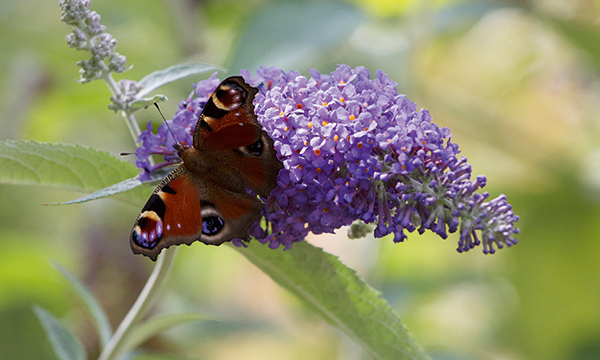Wildlife garden: how to create one and what to plant
Create a wildlife garden that acts as a haven for a rich variety of insects, birds and creatures
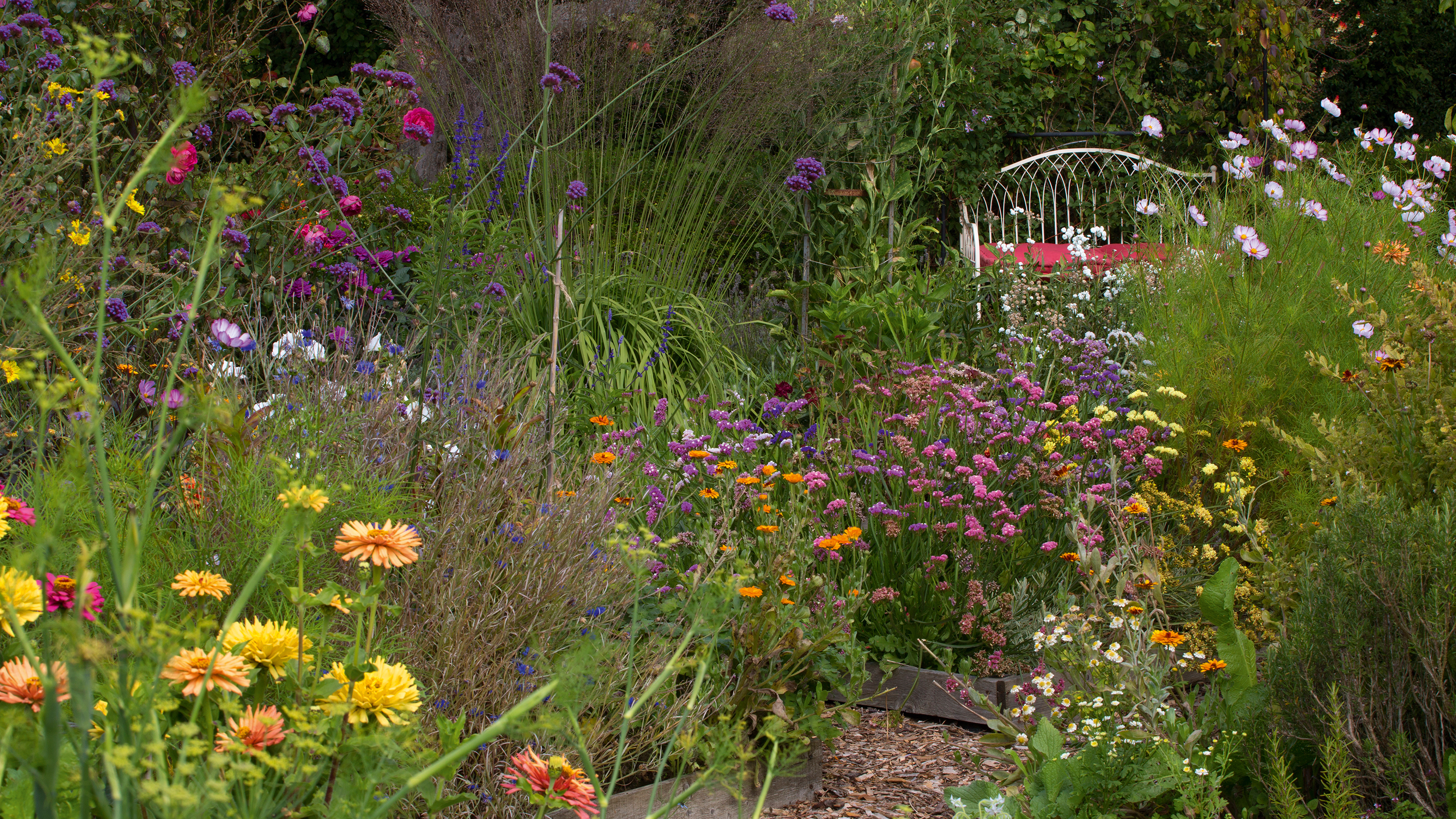
A wildlife garden is great for you, your plants and for the animals and insects that visit your garden. It isn't difficult to create one: with a few simple changes in gardens big and small, and by adapting the way you tend your garden, it is surprisingly easy to make your patch welcoming for a wide variety of wildlife.
Practically all gardens are already alive with bugs and beasties, but with natural habitats shrinking and changing, gardeners have a vital role to play in securing the future of our wildlife by designing gardens to be eco-friendly havens. You need to think of the needs of the insects and animals that come into your gardens, and create a balance between pests and their natural predators.
Read on for how to make your garden more wildlife friendly, then head to our dedicated garden ideas page for more inspiration.
- Once you've discovered how to make your garden more wildlife-friendly look at our related guides on how to make a bee-friendly garden or how to create a wildflower meadow.
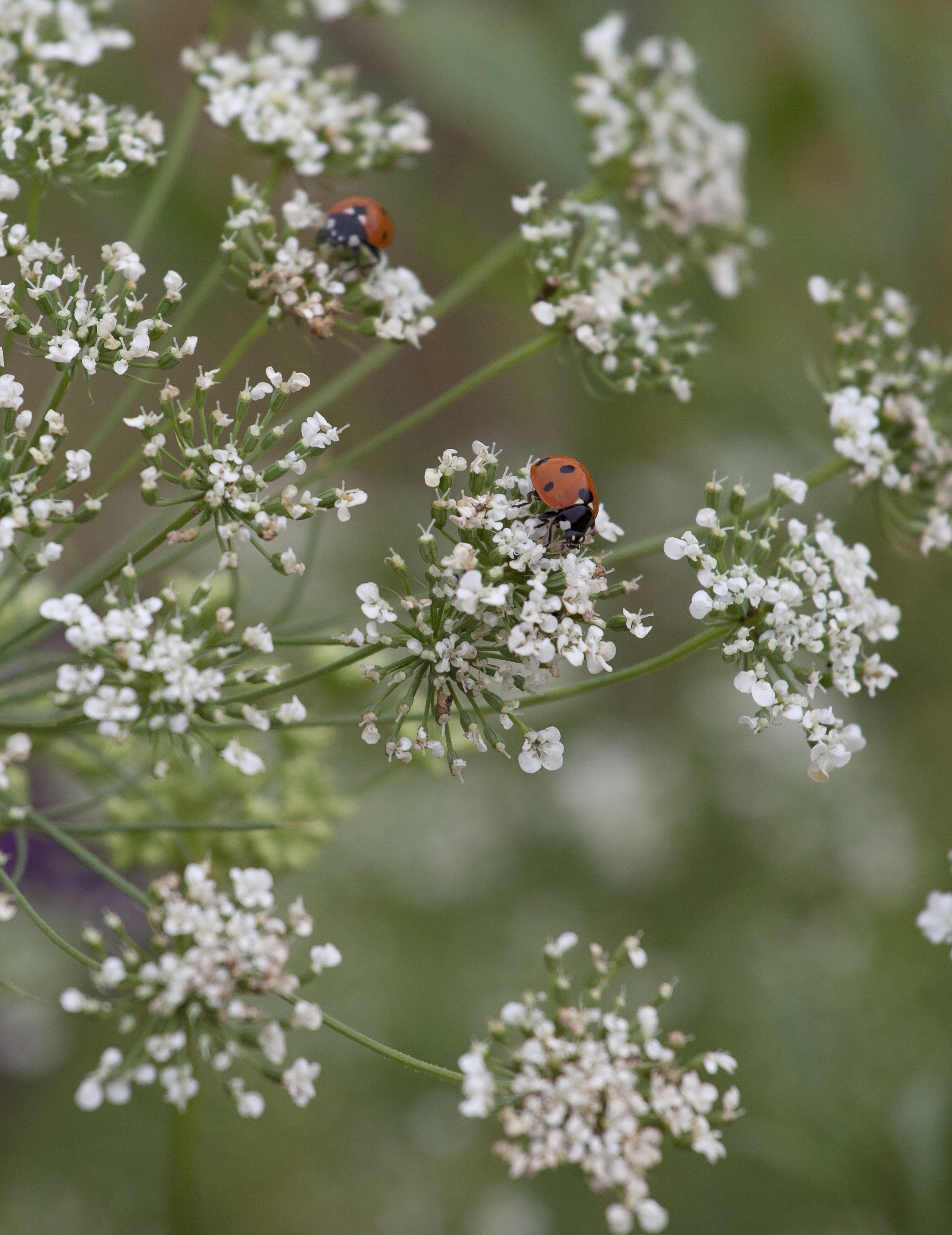
The ultimate in natural pest control - ladybirds will take care of aphids, greenfly and blackfly
How to begin gardening for wildlife
Wildlife needs two fundamental things to flourish:
- Habitat – somewhere to breed and shelter
- Sustenance – somewhere to forage for food throughout the year
Get the balance right and your wildlife garden will flourish, creating a food chain that manages the eco-system of your garden.
It might not need any drastic overhaul to your existing garden to turn it into a wildlife garden. It needs a mixture of open space, dense cover, water - to drink or live in - and, if space permits, a variety of heights provided by trees, shrubs, lawns, hedgerows and climbers. This is common to many gardens, so the trick to a wildlife garden is how it is managed.
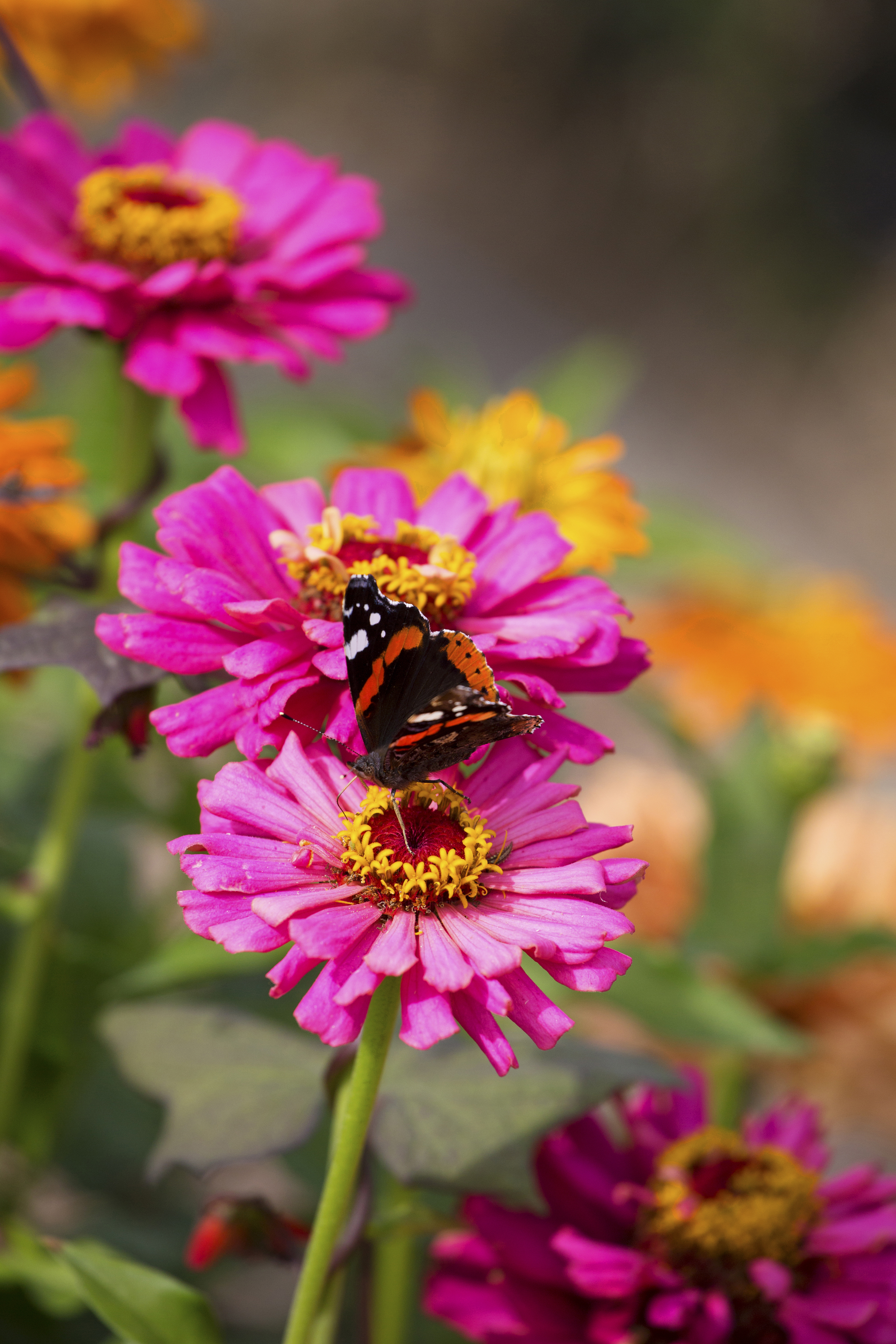
Provide plenty of plants to attract beautiful butterflies to your garden
What to include in a wildlife garden
- Plants: this is the single most important factor when it comes to attracting wildlife into a garden, as they provide the majority of the shelter and food source. As a general rule of thumb, single-flowering varieties of plants - or those similar to their original species form - are the best for insects and wildlife. Also include plenty of bee-friendly plants (see below).
- Water: is a vital resource for a wildlife garden. Make sure there is some water for visitors to drink, in a bowl or bird bath, particularly during dry spells throughout the year.
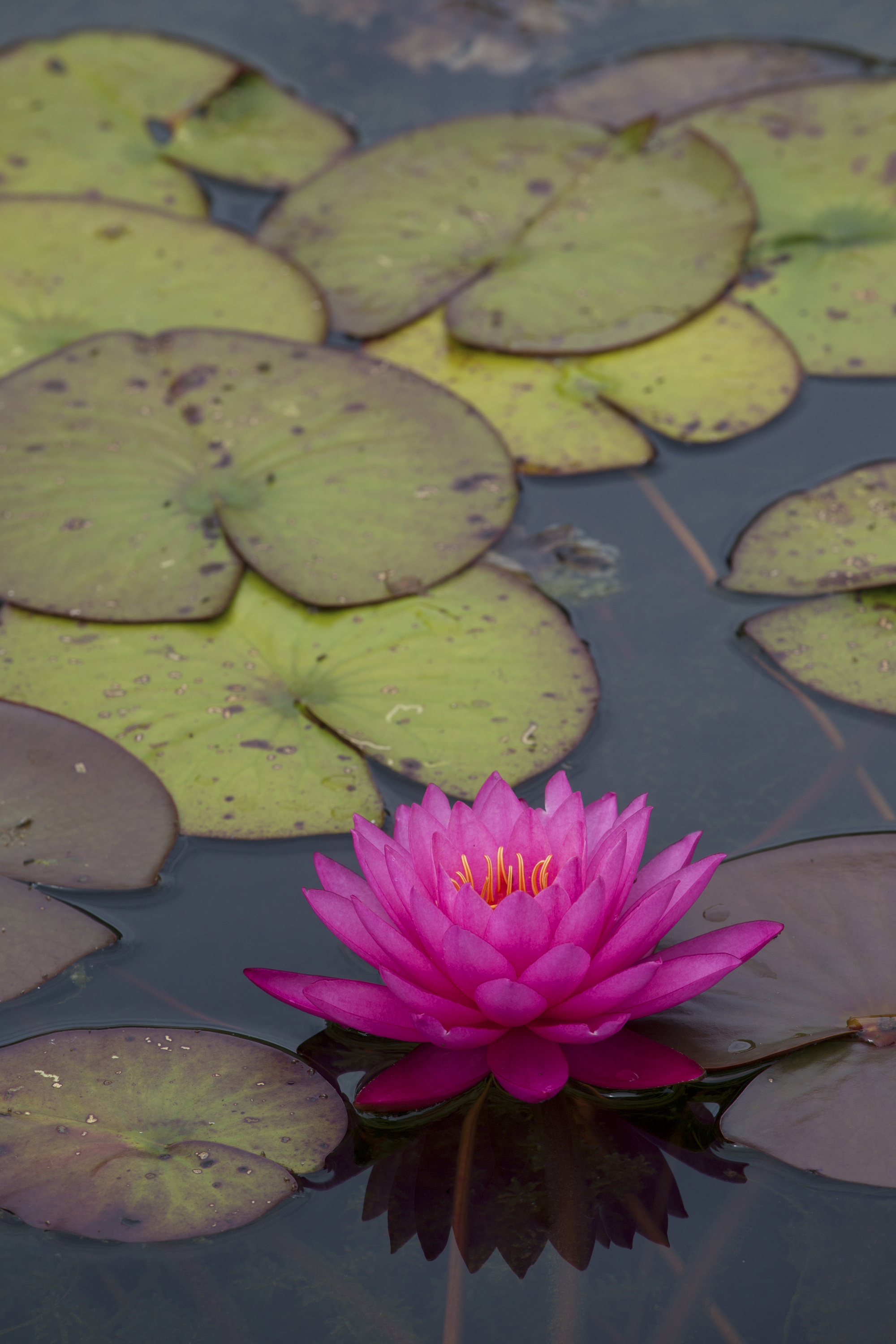
A pond, complete with water lilies and marginal planting will of course encourage frogs, toads and newts into your garden, but will also attract birds and insects. Including a water feature, even on a much smaller scale, such as in a bird bath, will improve the eco-system in your garden
- Ponds: can provide wildlife rich habitats and are relatively easy to construct - see our guide on how to build a garden pond. Ponds need to be properly placed and designed in order to them to be useful as habitats. For best results, choose a sunny spot, with shelter from the wind and avoid overhanging trees. A pond of a minimum of 4m squared, and at least 60cm in depth, is needed to create a balanced environment for a wide range of wildlife. Plant around at least two thirds of its perimeter.
- Long grass: is a useful and easy addition to a wildlife garden. Try letting a patch of grass grow tall in a corner of a garden, ideally linking this to areas such as a pond or hedge.
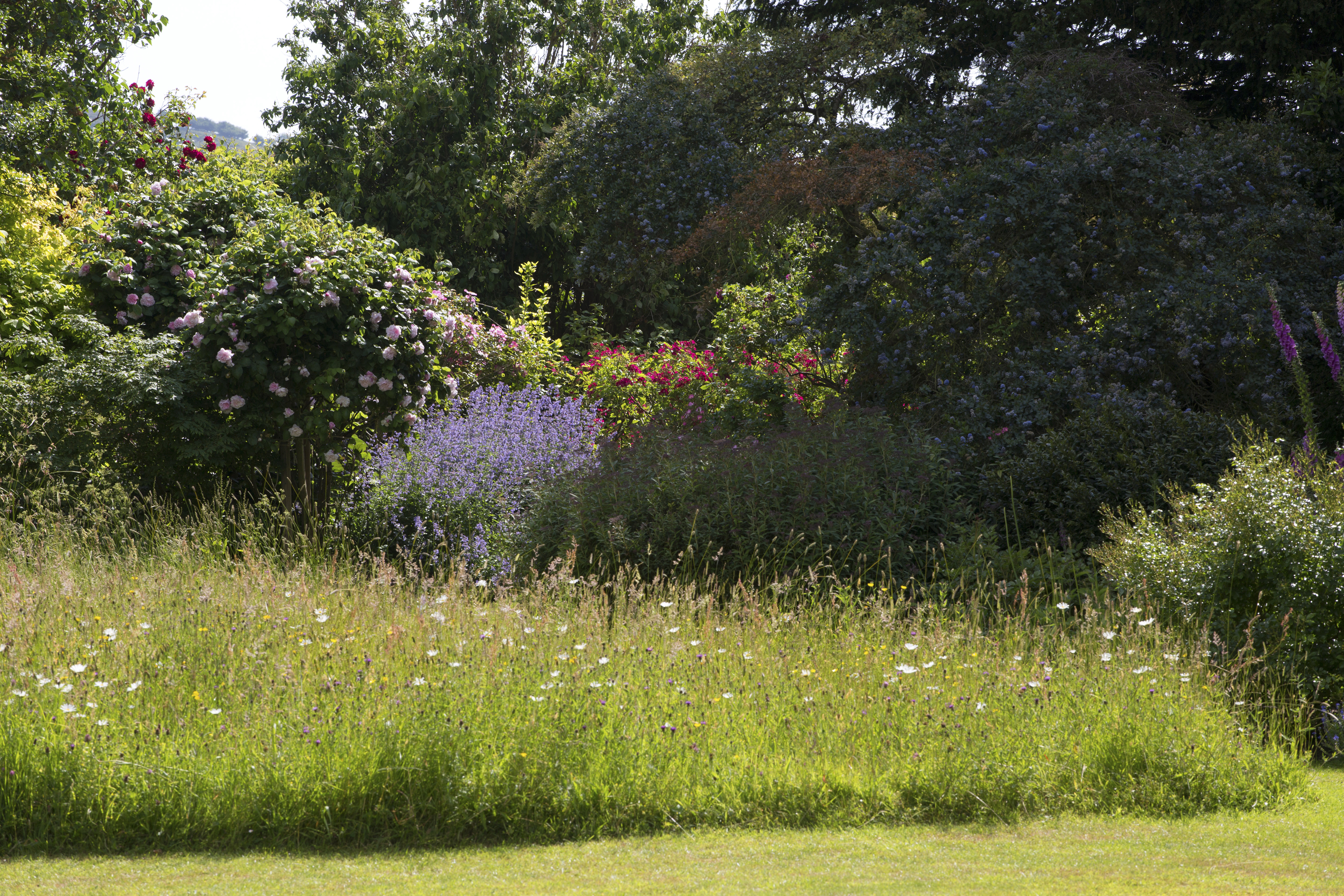
Let a patch of grass grow tall in your garden to provide shelter and food for wildlife
- Homes: create homes for various creatures, such as a bee hotel, bug hotel or hedgehog house (see below). These can often be easily created from log piles, stone piles, or a bug hotel constructed from a range of materials. See our guide on how to make a bee house.
- Large trees: if space permits it, large trees will provide perches and nesting sites for many birds. Those that produce seeds or fruit are often a valuable source of food for many birds in autumn or winter, too. Many climbers and shrubs also provide shelter for birds, enabling them to nest safely, and can be a further source for berries.
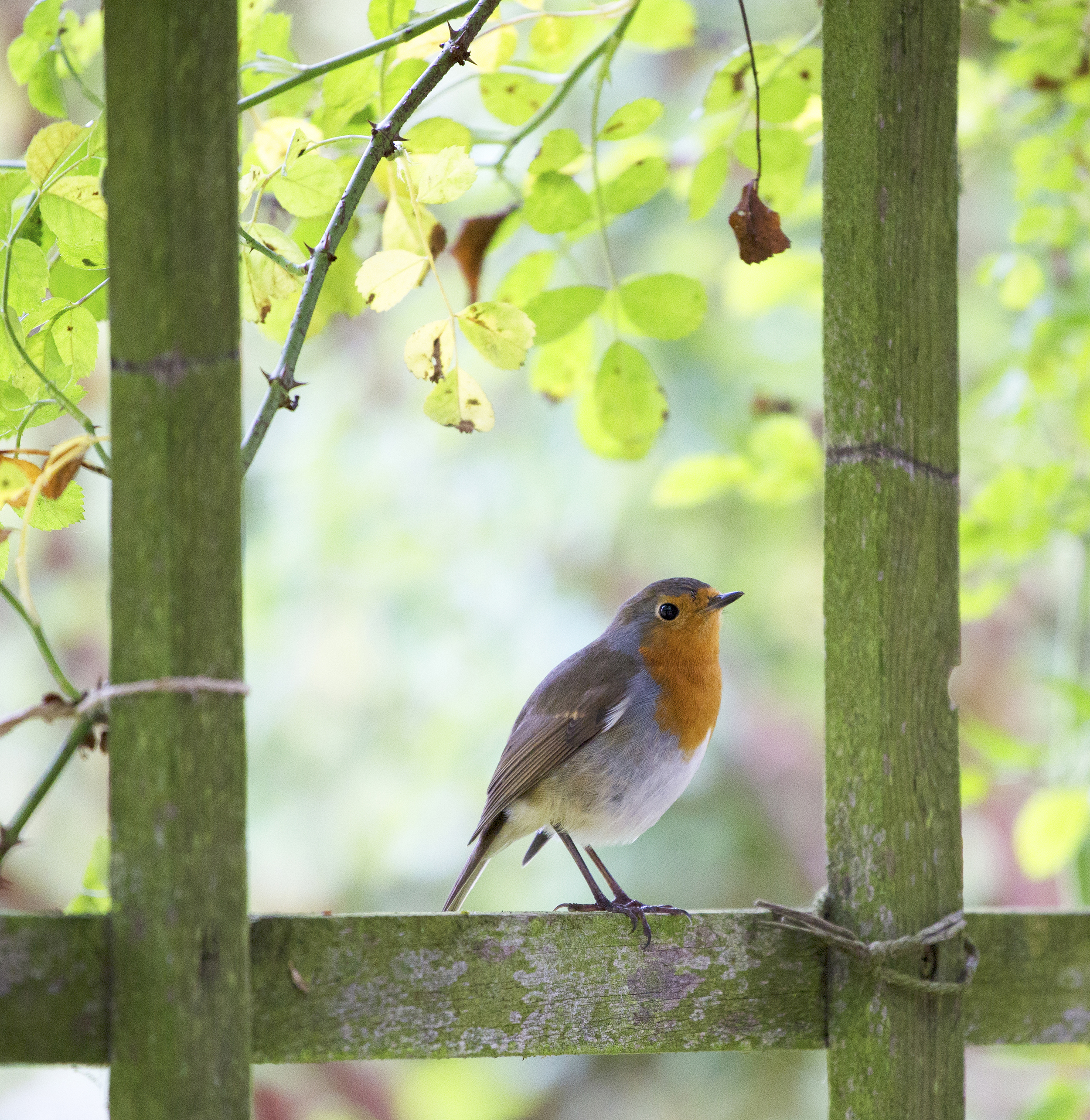
Birds bring song and beauty, but also eat bugs and beasties
How to maintain a wildlife garden
More gardening advice in Period Living magazine
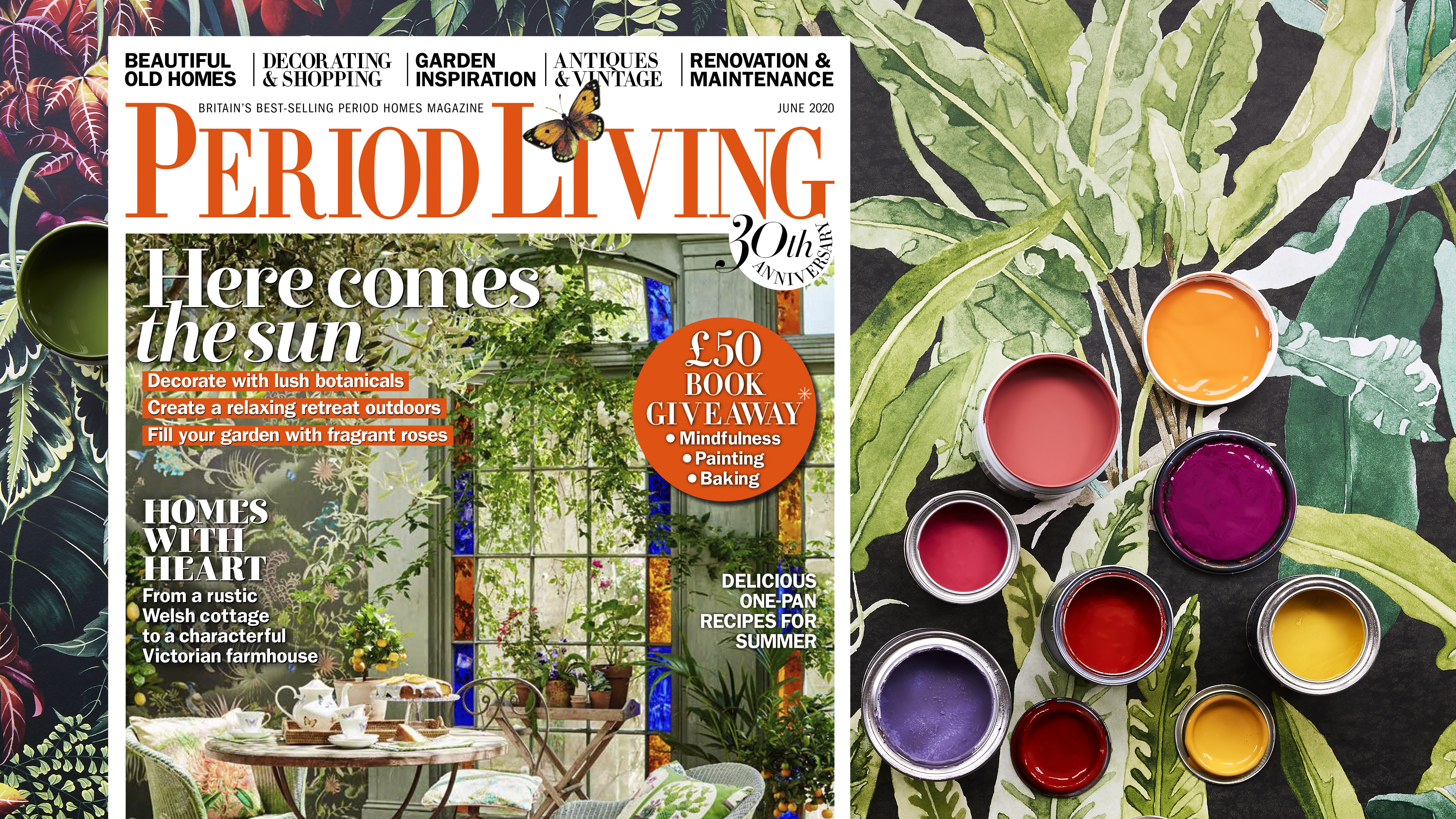
Period Living magazine is the perfect source of inspiration for anyone who owns an older property, or just loves characterful style. Check out the latest subscription offers.
Stop using insecticides: Gardening in an environmentally sensitive way will provide a more secure environment for wildlife. The simplest way to do this is to stop using insecticides. The presence of a good supply of insects, for example, is just as good as providing a nest box for birds, or putting out bird food.
Get small space home decor ideas, celeb inspiration, DIY tips and more, straight to your inbox!
If you manage your garden in a way that encourages wildlife, it is possible to reestablish a natural balance between pests and predators. You do not want to eradicate pests completely, but rather keep them in check so that plants will remain healthier.
Delay deadheading of plants: Avoid being over zealous in deadheading some of your border plants in autumn, with the obvious exception of those likely to self seed and become a nuisance. Many birds feed on spent flower heads and old plant stems, searching for seeds and insects. Wait until spring to clear the borders.
Natural garden pest control
The RHS recommends preventing and reducing pests and diseases by ‘good cultivation, cultivar selection, garden hygiene, using biological pest controls, avoiding pesticides where possible, and accepting the presence of some pests that can provide larval food for pollinators.’
Keep in mind the benefits of natural pest control: for example, birds and frogs will take care of slugs and snails, and ladybirds love to eat aphids, greenfly and blackfly.
Fewer than one per cent of British insects are garden pests, so all the more reason to embrace the mini-beasts. Attracting an abundance of pollinators will ensure our garden plants and crops continue to flourish.
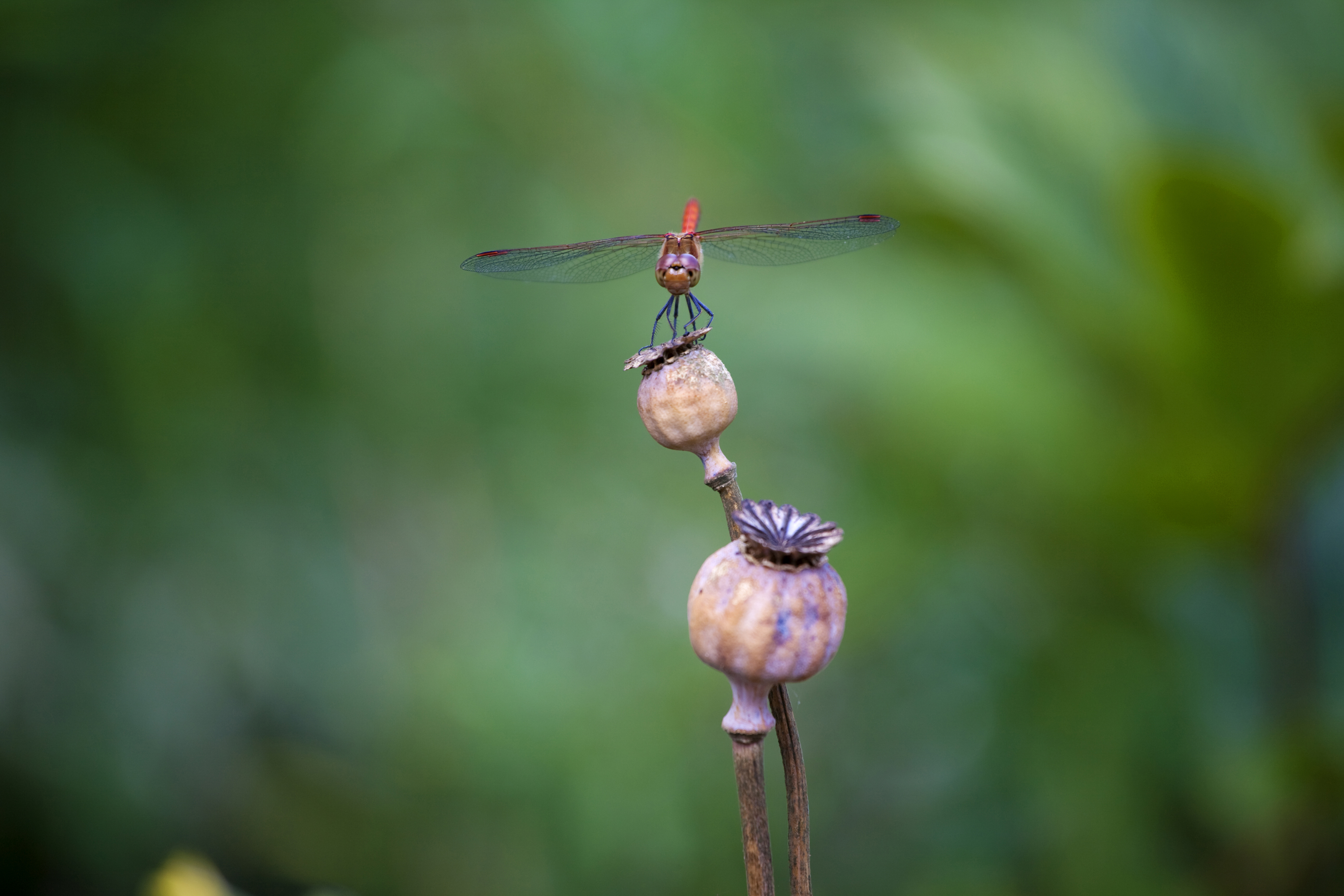
Leave seed heads and spent flower stems as possible sources of food
How to encourage biodiversity in your wildlife garden
Biodiversity is key to a healthy wildlife garden. There is a rich diversity in our gardens, often with more pollinators than in our countryside, but there are lots of simple things we can do to encourage further visitors to our patches and create a green corridor for wildlife.
Most gardeners already think about growing a diverse spread of plants encompassing groundcovers, climbers, trees and shrubs, as well as a floral mix of perennials and annuals, so it’s just a case of also considering their use for food and shelter.
Ensure that you include a range of plants that provide benefits for wildlife throughout the whole of the year. Much wildlife struggles through the leaner months, so an environment that offers a ready food supply all year round will have greater diversity and stability in the long term.
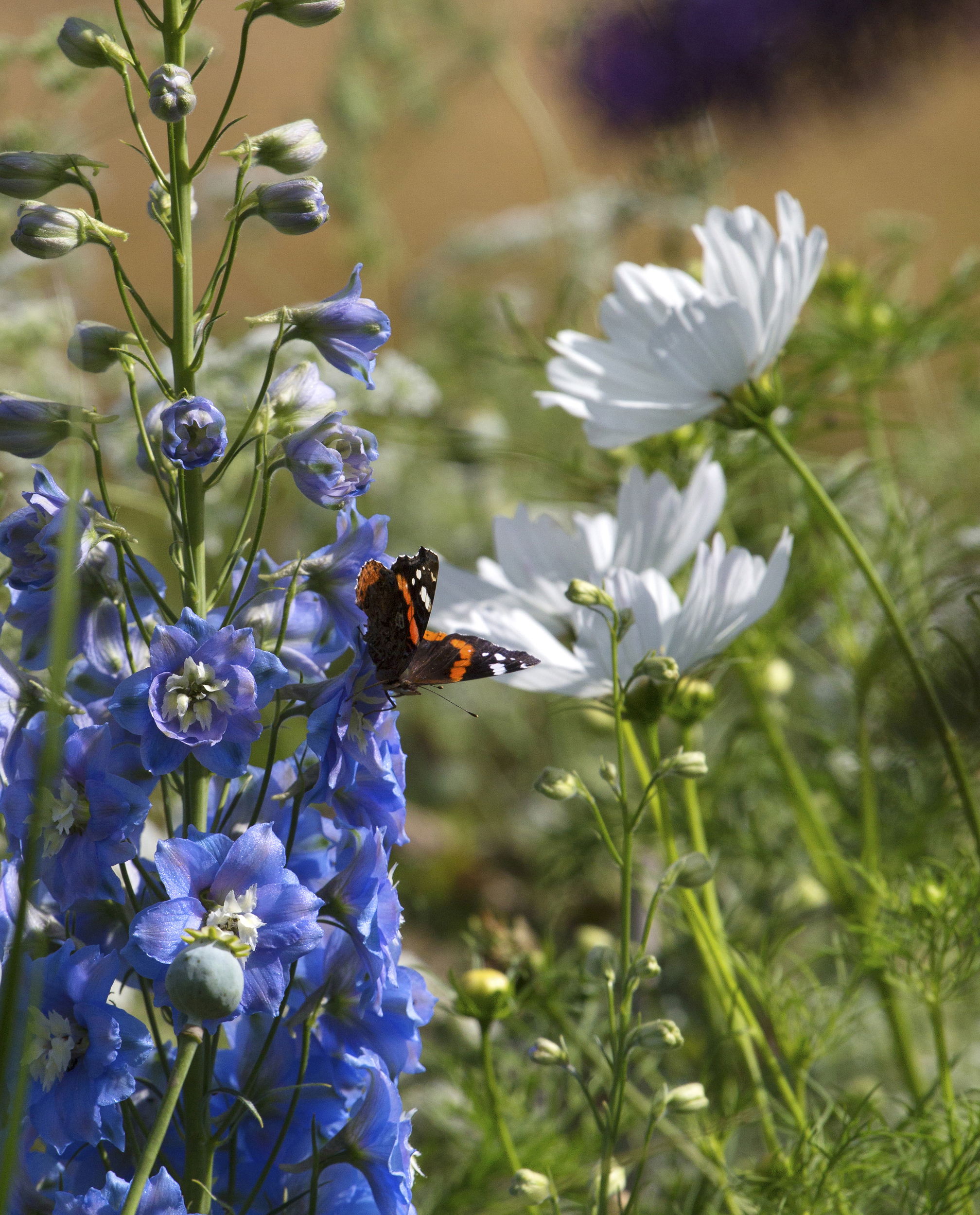
How to encourage pollination

- When selecting plants, spare a thought to including an array that will provide pollen or nectar for bees and other pollinators over as long a season as possible, from early crocus and mahonia to winter-flowering viburnum and ivy.
- Select open flowers rather than double or highly bred cultivars for the best pollen, and to make easier access for bees, butterflies and other pollinating insects that have the absolutely essential task of fertilisation.
Find out more about choosing plants for your garden.

Open flower forms make easier access for pollinating insects
- Grow a range of both native and introduced species, in mixed hedges, add trees that have both blossom and berries, and look closely at labels such as the RHS Perfect for Pollinators symbol.
- If you are looking for bee-friendly plants and ones to attract other pollinators, they should have been grown without synthetic pesticides. It is worth hunting out an organic nursery and remembering not to spray open flowers.
- A patch of nettles is a magnet for beneficial insects, in particular ladybirds for egg laying, and they are considered key to the survival of butterflies as a food source for many caterpillars such as peacock, tortoiseshell and comma.
- Keep a patch of grass long or plant a meadow of wafting flowers mingling with parchment grasses - use one of our best wildflower seed mixes to start your own meadow.
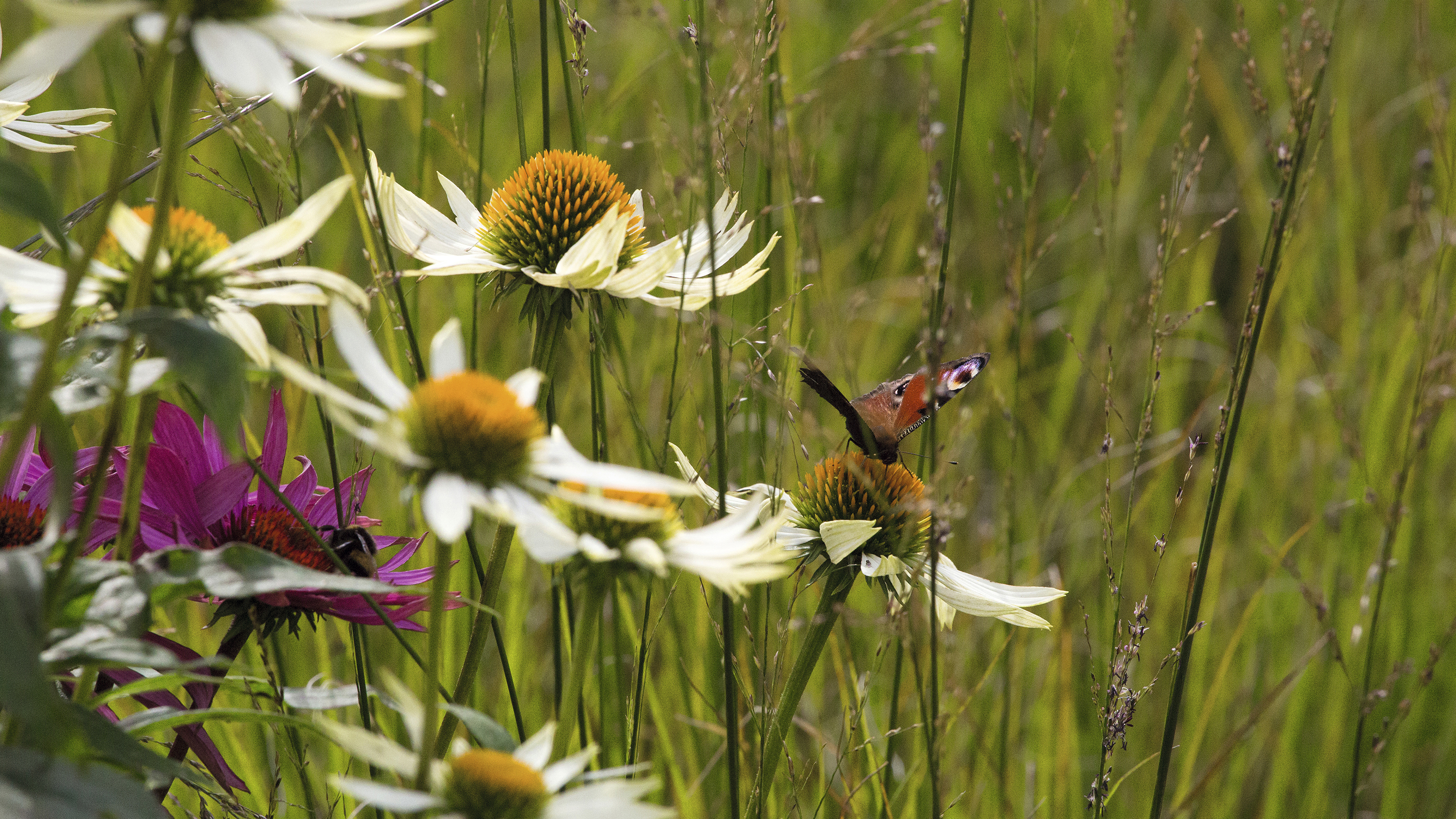
Meadow-style plantings that combine flowers and tall grasses will be a welcome stopping place for butterflies and other pollinators
Increasing your garden’s plant diversity and encouraging more wildlife to stop by will make a more interesting and healthy haven for you, too.
More insects in your garden will also mean more birds; find out how to encourage summer birds back into your garden in our guide.
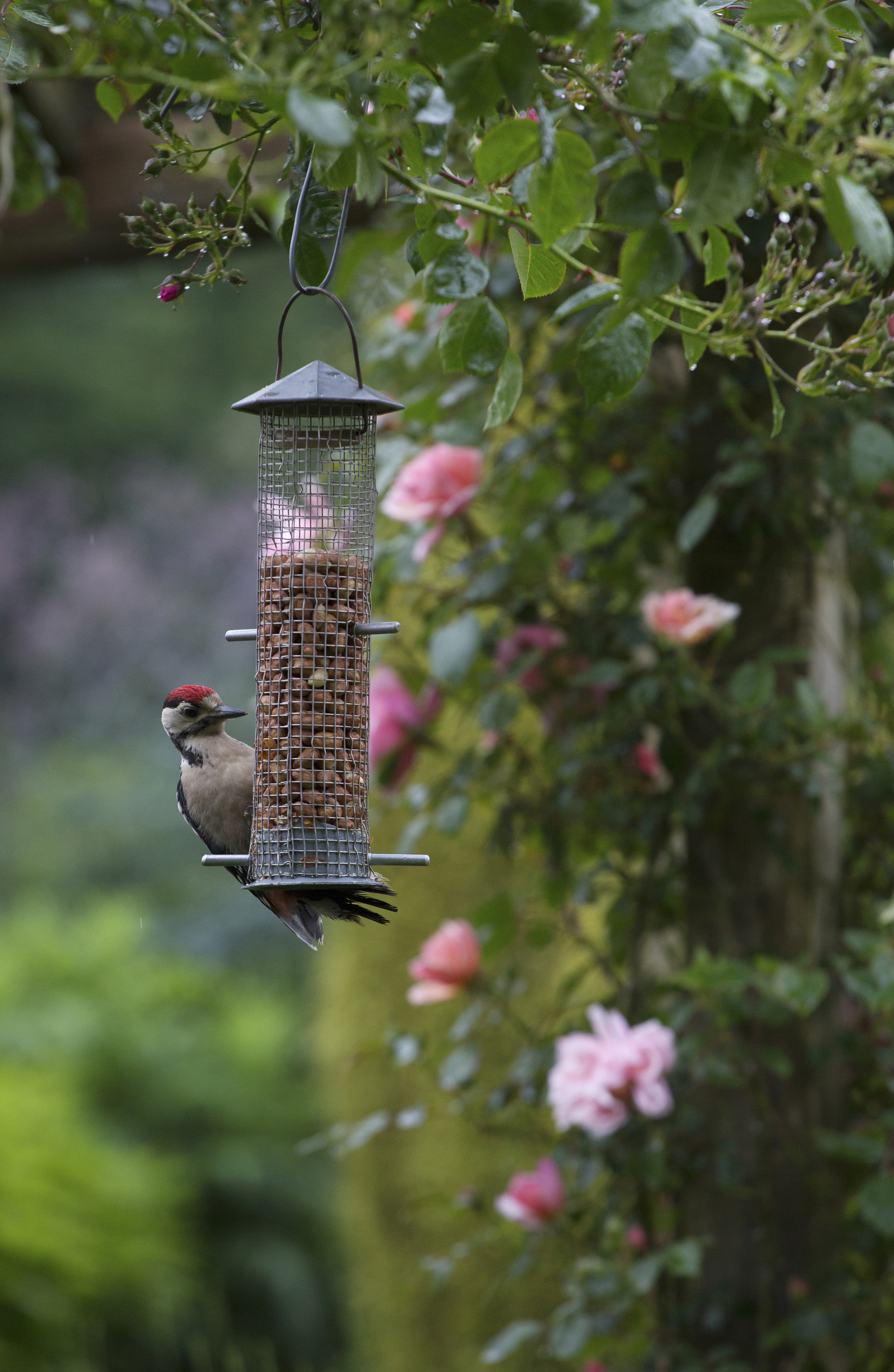
Bee-friendly plants to include in a wildlife garden
It is estimated that 80 per cent of the Western diet is dependent on bee pollination, so it is important that we do what we can to help the health and survival of our British bees.
We can do our bit by adding pesticide-free nectar and pollen rich flowers. If in doubt about which plants to choose, check out this handy list of bee-friendly plants from Urban Bees.
Find out how to create a bee friendly garden.
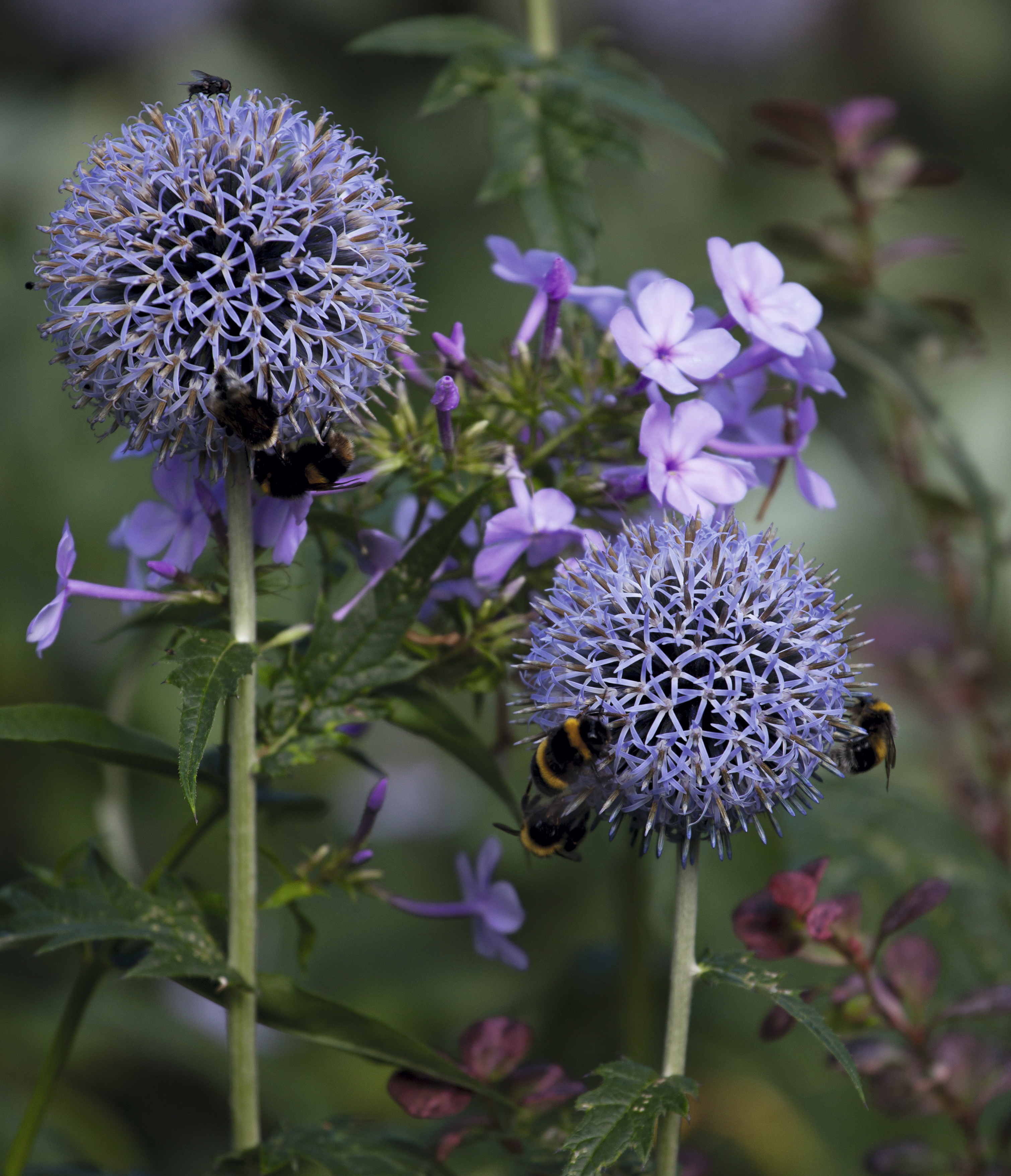
Bees focus their pollen collecting near the hive, returning to the same source until it is depleted, so it is important to plan a succession of choices from early spring to late autumn, and even into winter.
- Provide long-flowering, single open flowers, old-fashioned cottage plants and native choices for food, water to drink and habitats for shelter.
- Bumblebees may nest in tussocks of grass or moss on a bank of long grass at the edge of your plot. Planting catmint and clover should encourage them into your garden.
- White-tailed bumblebees now survive our milder winters so planting winter-flowering nectar rich plants will help them do even better.
- Clumps of bee-friendly plants, planted in sunny positions are more attractive to bees than scattered or shady spots.
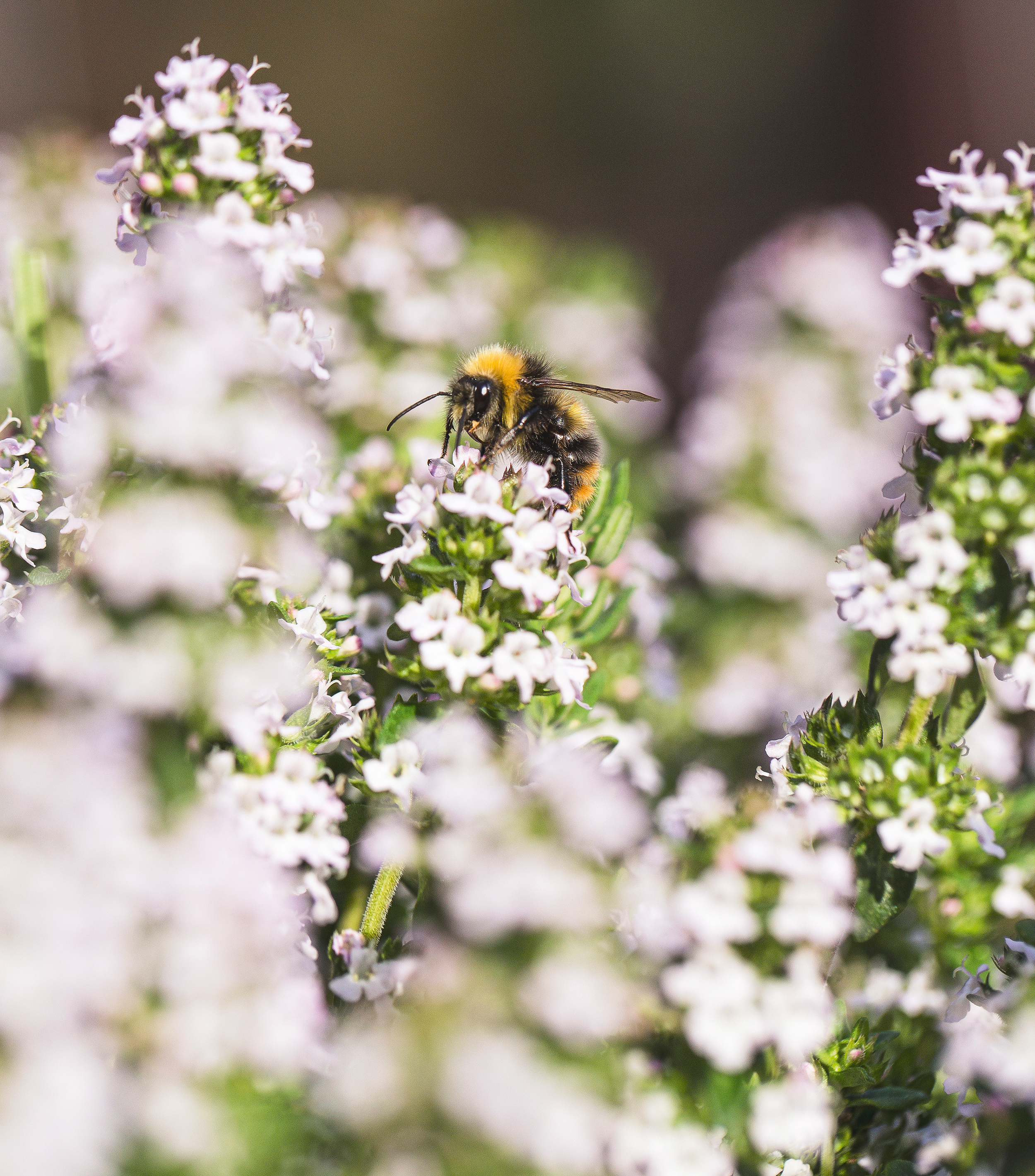
- Replace some of your lawn with a meadow area or some British wildflowers.
- Honeybees like saucer-shaped flowers as they are easier to get into with their short tongues.
- Different species of bumblebees have different lengths of tongue, which means they feed from different shaped flowers.
- Large shrubs and trees are a vital food source as well. Five established winter-/early spring-flowering trees supply a similar amount of pollen and nectar as an acre of meadow.
Solitary bees are not at all aggressive; bumblebees and honeybees are unlikely to sting unless disturbed, so enjoy watching them and leave them to forage in your garden.

Bee hotels and bug hotels
Provide bees with shelter in a bee hotel or bug hotel to encourage them into your wildlife garden.
Unlike the bumblebee or honeybee, most of our bees are actually solitary and do not live in colonies. Some will nest in holes in the ground, while others will look for hollow stems or holes in which to lay their eggs.
If you can provide suitable homes for them, these vital pollinators will come to your garden. A bug hotel will also provide a habitat for other useful creatures, helping to maintain your garden's natural biodiversity and eco balance.
Bee hotels and bug hotels are easily bought and installed and can make all the difference. See our best buys below:
How to make a bee hotel
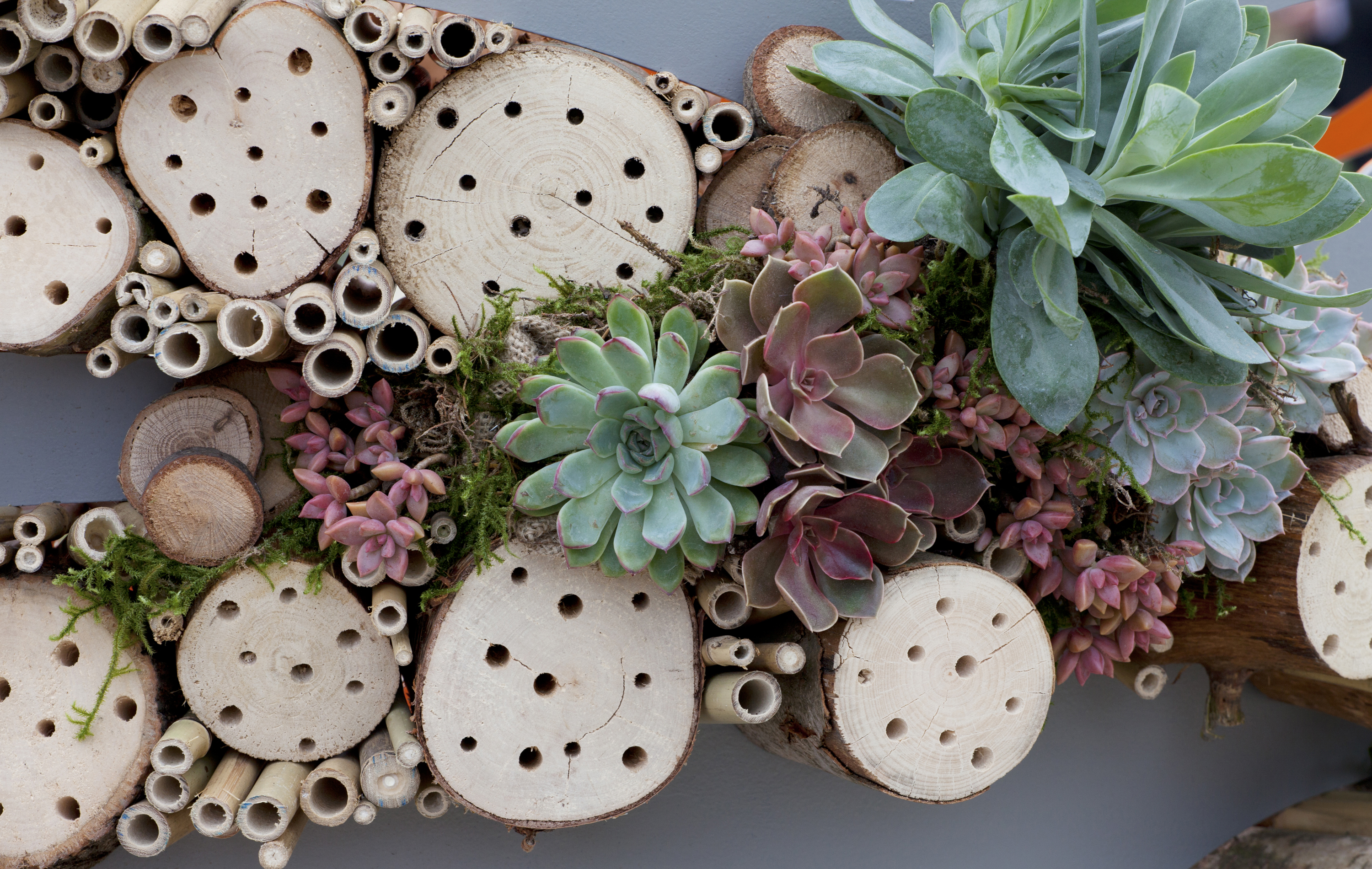
You can create a bee hotel or bug hotel that is as simple or as elaborate as you like. Here one is interplanted with succulents
It is simple to make your own bee hotel. To do this you will need the following:
- Plank of wood, at least 15 cm wide
- Backing board - sheet of mdf or wide off cut of wood
- Nails
- Saw
- Drill
- Hollow bamboo canes
- Reeds and other hollow stems
- Untreated hardwood and logs
1. Saw the plank of wood into four to make a rectangular frame, or you can create compartments by adding some more lengths of cut plank for the inside
2. Assemble the frame by screwing the sides together. If creating compartments, add in these lengths, than attach a backing board to the frame
3. Cut your various hollow stems and canes to size to fit in the frame
4. Drill holes of various sizes in the logs and blocks of wood
5. Fill your bee hotel with the tubes and blocks of wood or logs, squeezing them in together so that they stay in place.
6. Place the bee hotel in a sunny position at about waist height - either fixed to a tree, wall or fence - and close to bee-friendly plants.
To make a bug hotel: which will attract bees and many other bugs and creepy crawlies, use the same system as above, but as well as hollow stems and drilled logs, add into your frame a mixture of the following: dry leaves, dead wood, moss, straw, bricks, pine cones, old roofing tiles, pine cones.
The idea is to provide all sorts of different nooks, crannies and crevices for all sorts of creatures, such as beetles, spiders, woodlice, and ladybirds.
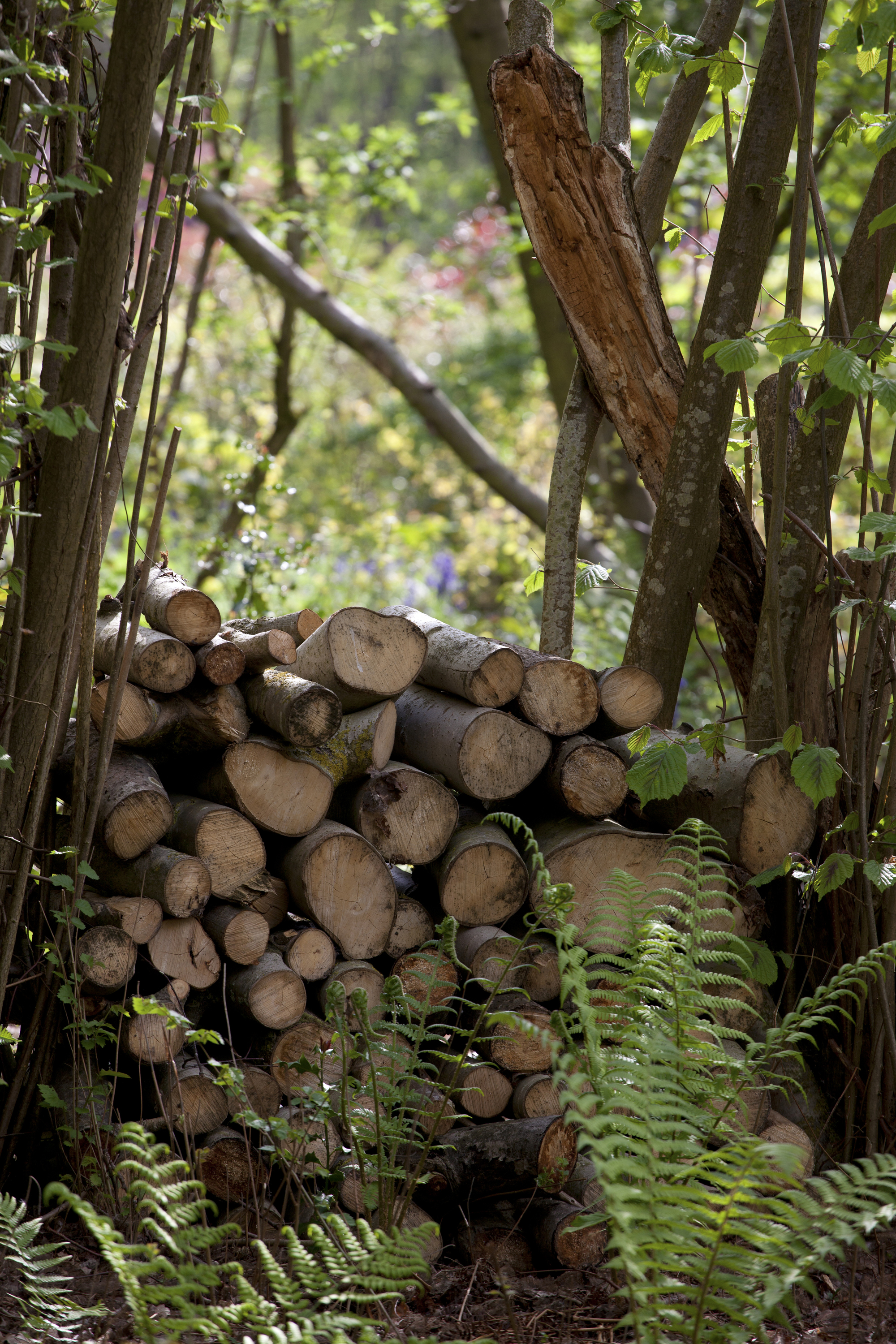
A simple log pile can also provide a habitat for all manner of insects, bugs and creatures
How to build a hedgehog house
A joyful little visitor to take up residence in your garden, hedgehogs need somewhere to nest and rear their young, and also to hibernate in winter. Encourage them into your wildlife garden by providing them with a hedgehog house.
It is simple and easy to build a hedgehog house. You will need:
- About 20 bricks
- Logs
- A sheet of wood or large paving slab
- Spade
- Gardening gloves
- A pile of old leaves, moss, twigs
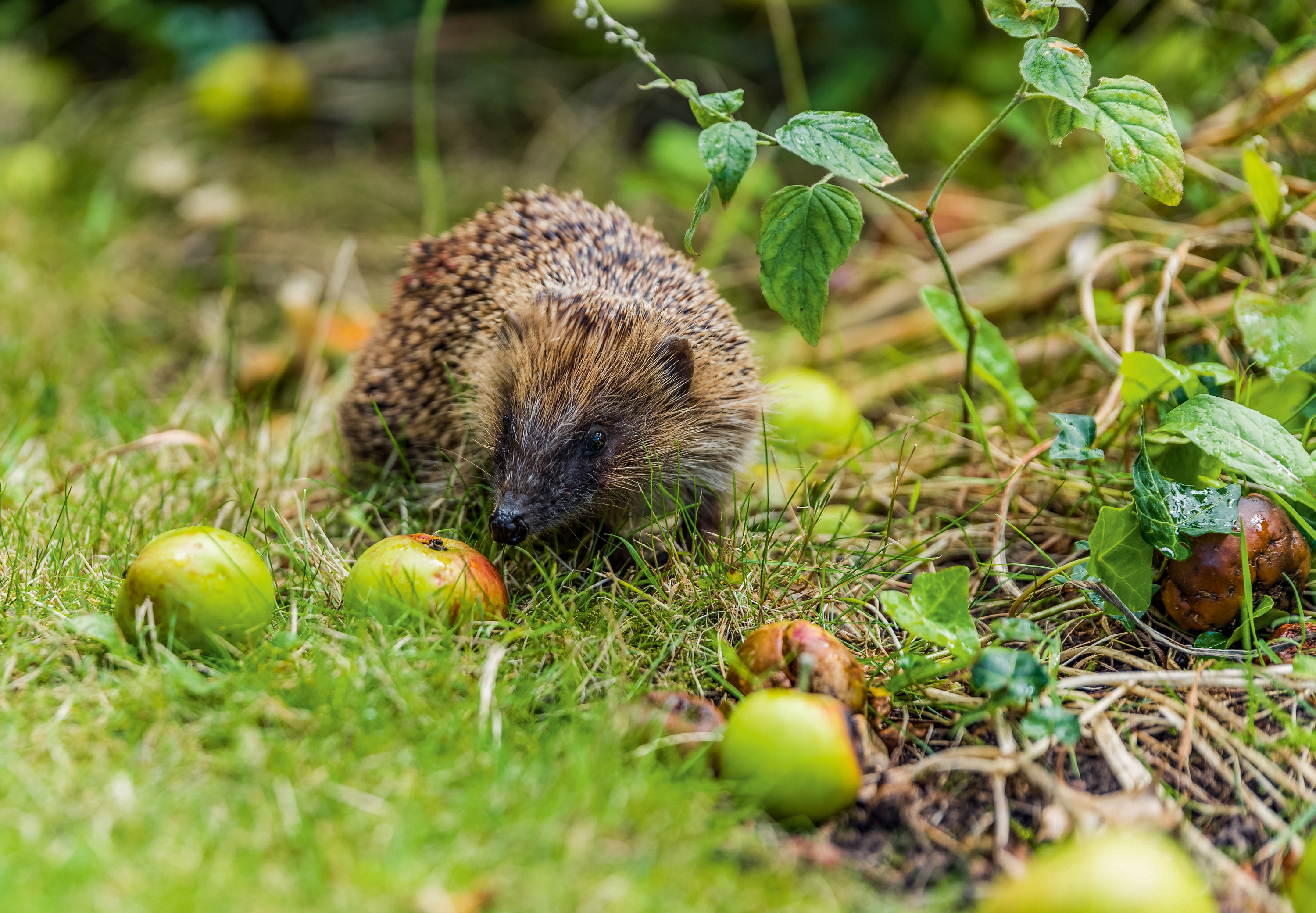
Who doesn't smile with joy at the sight of a sweet little snuffling hedgehog in their garden? Encourage them into your outdoor space by building a hedgehog house
1. You will need to find a flat, quiet and shady spot for your hedgehog house. Hidden away in a corner of the garden by a hedge, wall or fence is ideal.
2. Dig a small hole – no more than 10 cm deep and about 40 cm wide.
3. Fill the hole with a layer of leaf litter that you have collected.
4. Lay the bricks around the hole, leaving a gap for the entrance, building walls of the same height, and making sure they are stable.
5. Put the sheet of wood or paving slab over the top to form a roof and weigh this down with more bricks and logs.
6. Pile logs at the sides of the house – these will provide a habitat for bugs and insects, which will provide food for the hedgehog.
7. Try to leave this area of the garden undisturbed so that the hedgehog feels safe to take up residence in the hedgehog house.
A pile of leaves and logs can also provide a home for a hedgehog, so simply leave a messy patch in a quiet corner of your garden for them to make a nest in.
10 tips for a wildlife friendly garden
- Choose plants attractive to native wildlife
- Grow a diversity of wild and cultivated plants
- Plant single, broad flowers to attract bees
- Allow some plants to go to seed
- Cut shrubs on a rotational basis
- Make space for mini-beasts to provide the whole food chain
- Use organic methods for pest control
- Include water, in a container, birdbath or a pond
- Place a pile of logs in a quiet corner of the garden
- Plant a perennial or annual meadow
Top wildlife garden plants
Sunflower – Select single forms. Bees love them in summer and it’s a seed buffet for birds later in the season. Sow in a sunny protected spot in spring, early summer
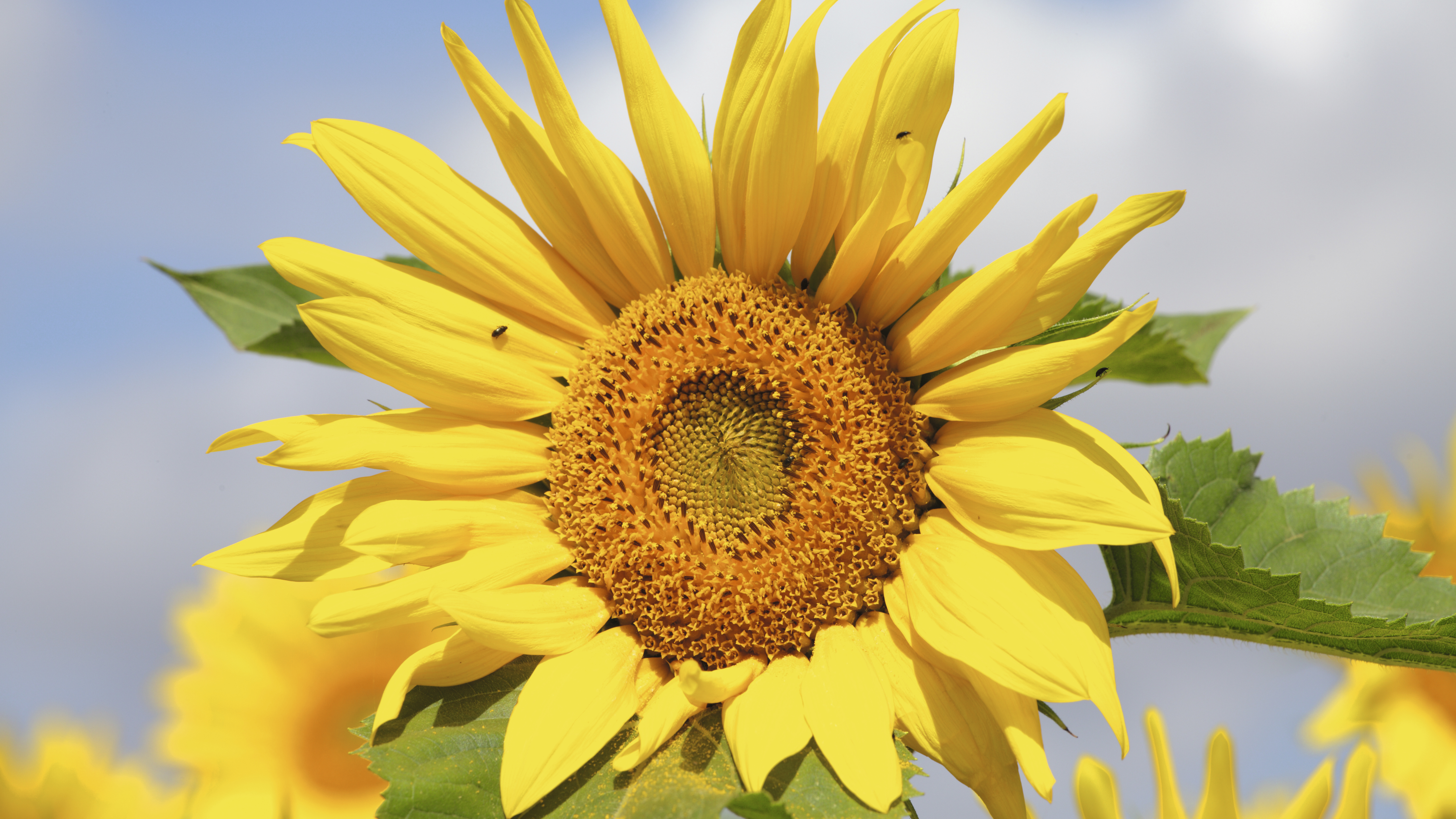
Foxglove – Digitalis purpurea, our native form, is a biennial wildflower loved by bumblebees. They do best in light shade. Ideal in borders and woodland

Teasel – Architectural, spiky seedheads that last through winter. They provide food and shelter for a myriad of creatures, including bees and birds. Best in clay soil that doesn’t dry out in summer

Echinops – Herbaceous perennial that is a magnet for bees and other insects. Easy to grow in well-drained soil

Sedum – Easy-to-grow succulent that provides nectar late in the season, and is a haven for bees, hoverflies and butterflies. Does best in full sun
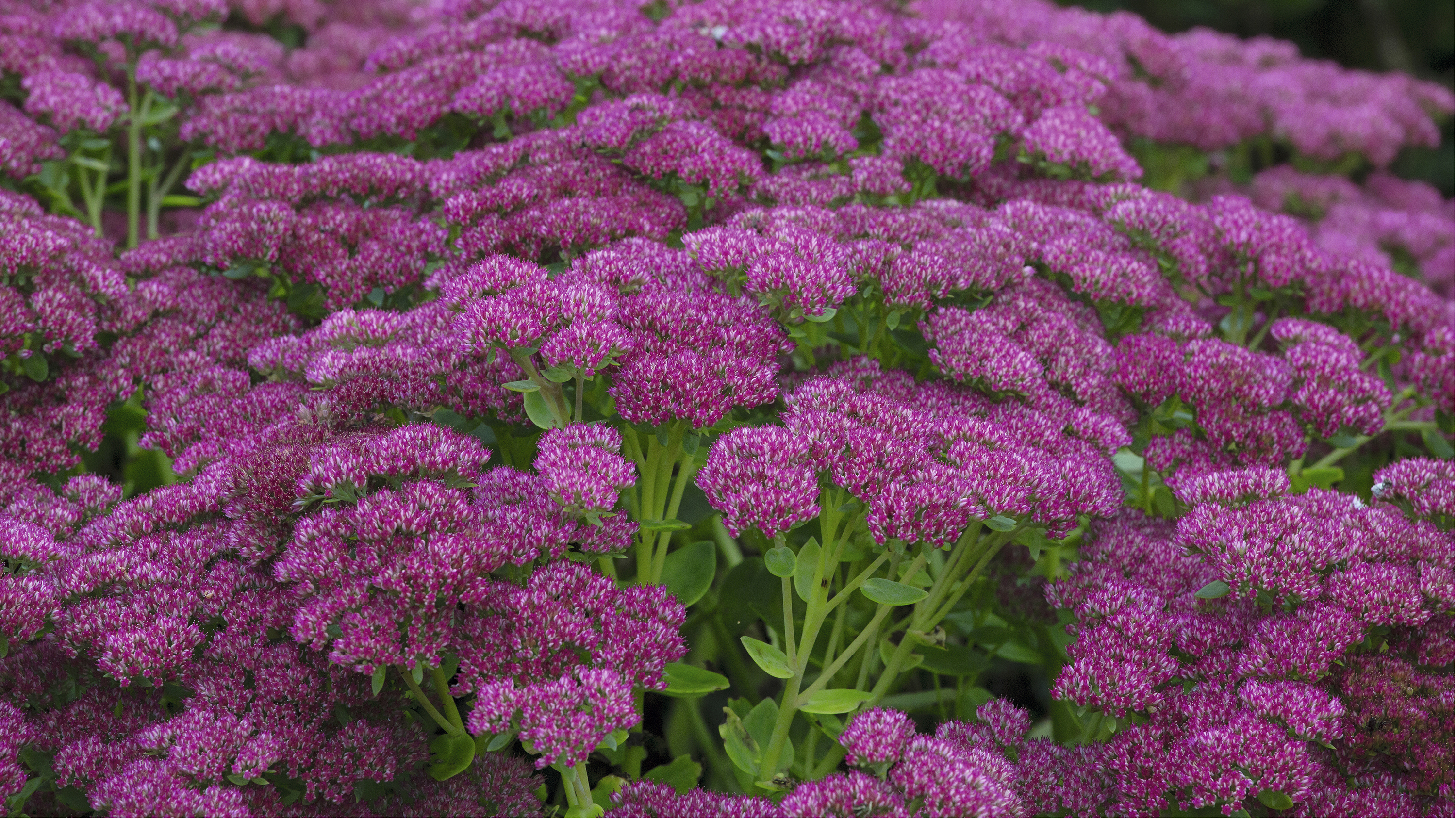
Honeysuckle – Fragrant flowers on a vigorous vine – great for nectar-loving insects, and berries for birds. Full sun or part shade

Pyracantha – An evergreen shrub with clusters of white flowers in spring and red, orange or yellow berries in autumn. Birds enjoy the berries and shelter it provides, and the nectar is enjoyed by bees and butterflies
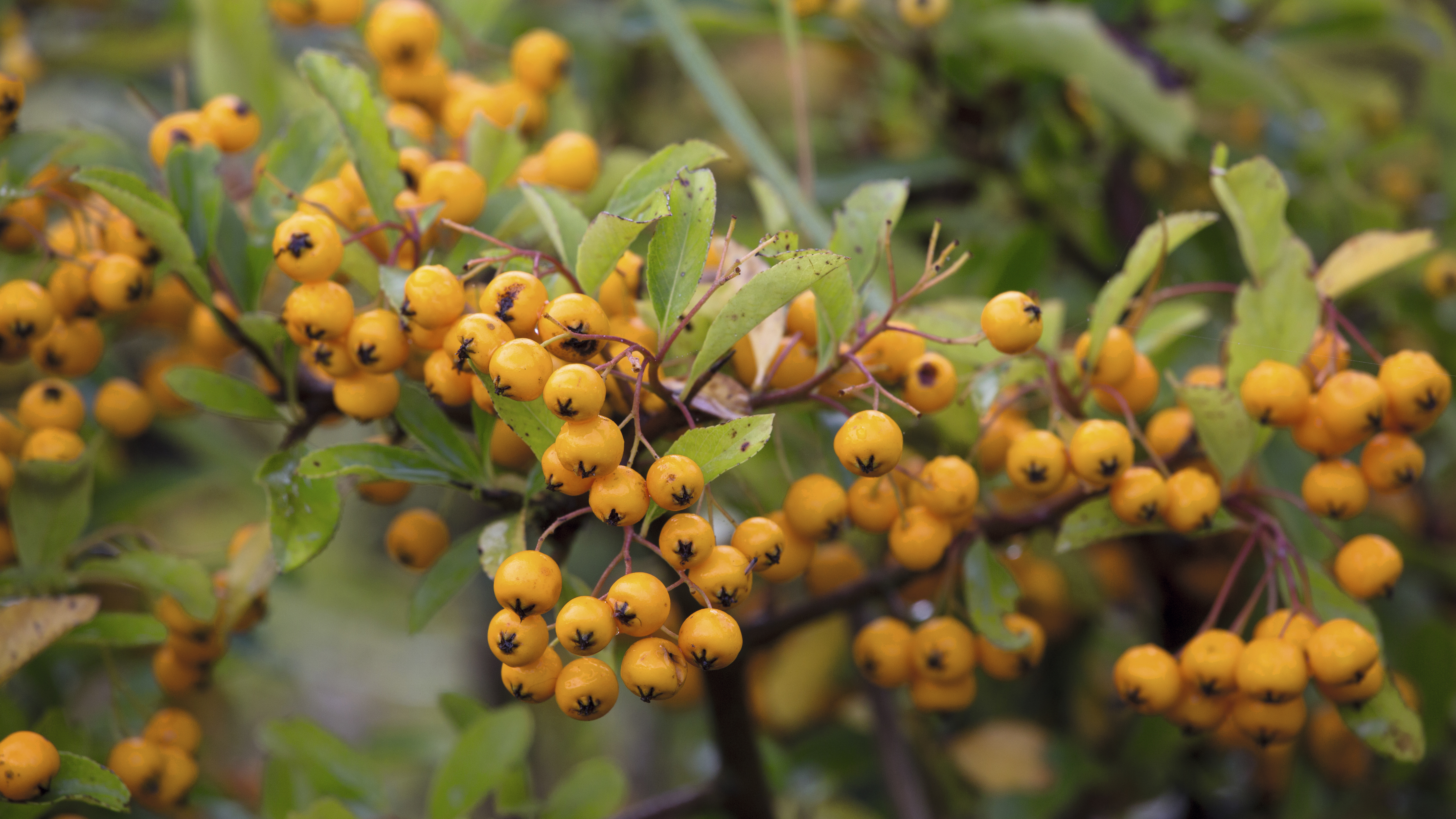
Malus, crab apple tree – Native and exotic varieties suit all sizes of gardens. Birds enjoy the autumn fruits and bees love the spring blossom
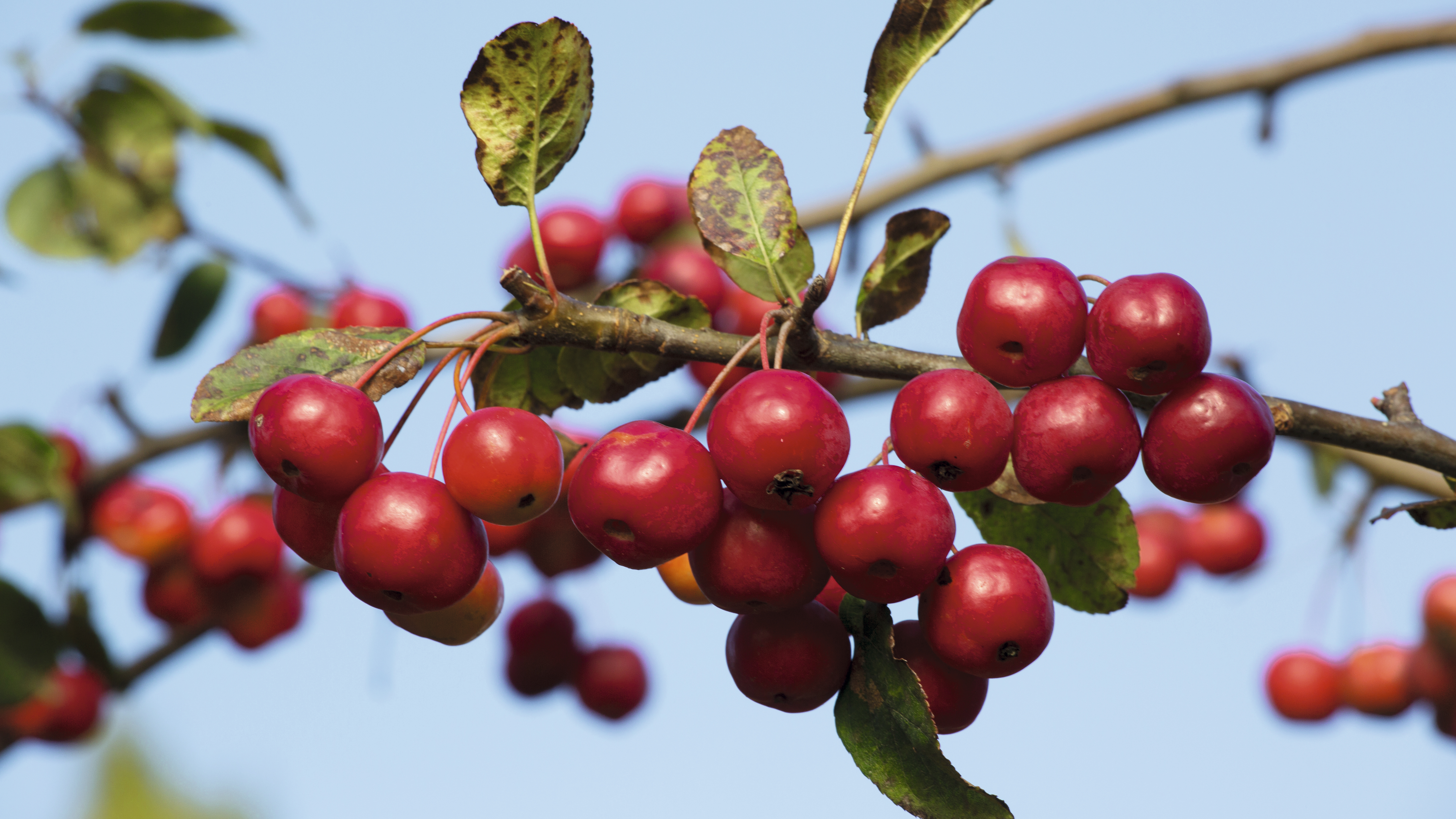
Berberis – Easy-care shrub for all but dry soils. Provides nectar for butterflies and moths, plus shelter for caterpillars, and thorns create a barrier for safe nesting sites

Euonymus, spindle – An easy-to-grow native tree, leaves are eaten by caterpillars and attract aphids and therefore their predators such as hoverflies and birds. Flowers provide rich nectar and pollen for insects; berries are poisonous to us but loved by finches. Sun to part shade, well-drained soil
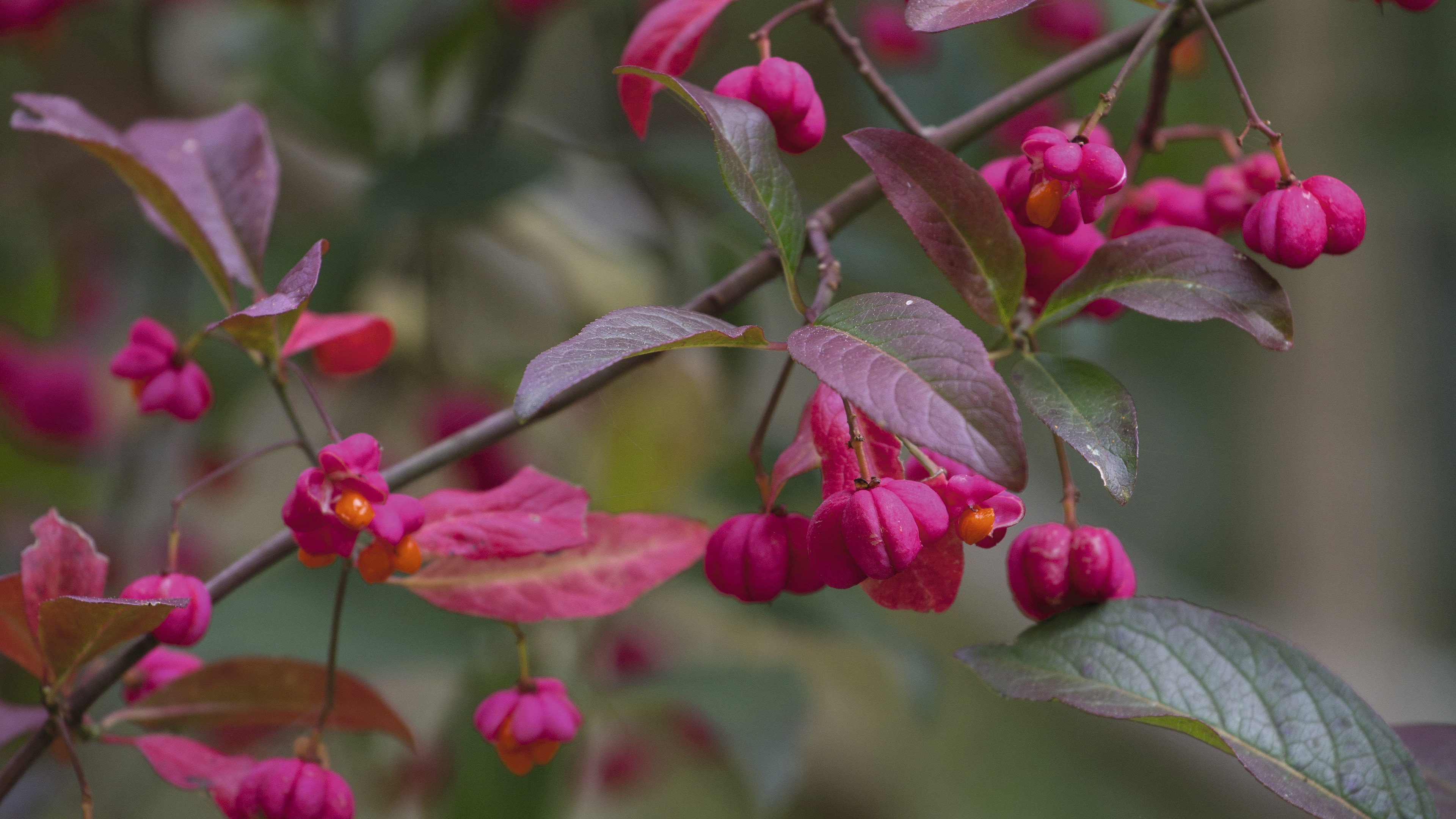
Echinacea – Prolific flowers adored by bees and butterflies. Once established they are very robust and long-lived. They need fertile soil so add some compost when planting and choose a sunny spot
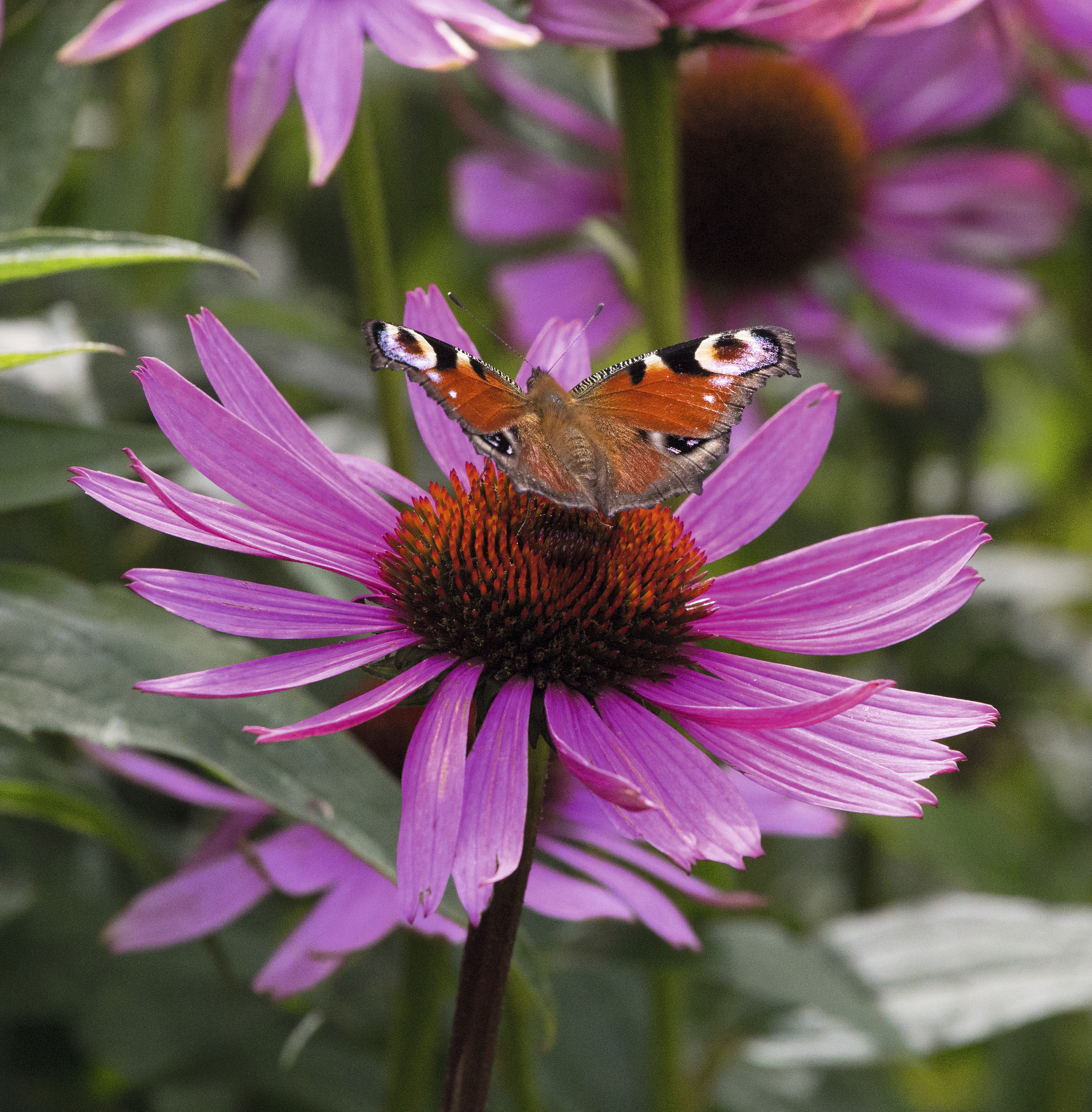
Buddleja – The nectar-packed flowers in summer and autumn are a real butterfly magnet. Fast-growing deciduous shrub. Grows in most soils, in sun to part shade. Prune hard in late winter. Choose a variety that won’t become invasive
